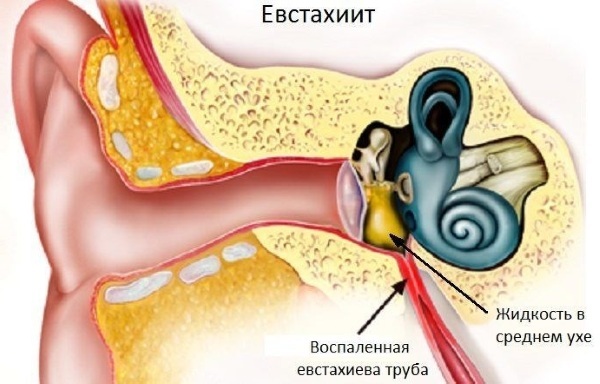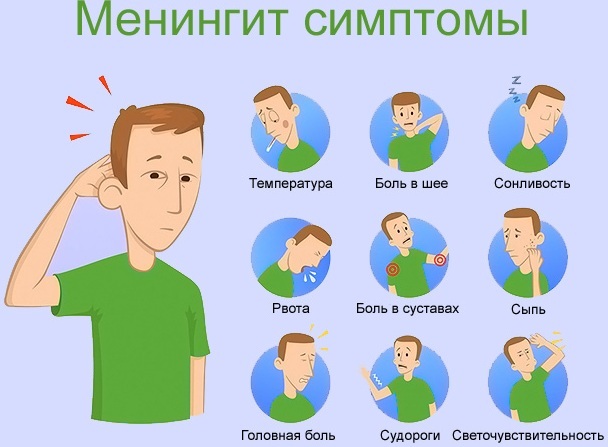Content
- What symptoms indicate that the head has blown
- Probable causes
- Air conditioner
- Wet hair and strong wind
- Open doors and windows
- Draft in the car
- Other probable causes
- Differentiation of the diagnosis if the head blew out
- First aid
- How to treat a chilled head in adults
- Drug treatment
- Home treatment assistance
- Potential consequences if untreated
- Facial (trigeminal) nerve neuritis
- Meningitis
- Otitis
- Inflammation of the maxillary or frontal sinuses (sinusitis, frontal sinusitis)
- Tendinitis
- Conjunctivitis
- Lymphadenitis
- Arachnoiditis
- Video about the treatment when the head blew
When I blew my head a specialist should analyze symptoms and determine treatment in adults. A complaint of hypothermia of the head can occur in various conditions and diseases, which may require a clear differentiation in diagnosis and treatment.
What symptoms indicate that the head has blown
A certain mechanism underlies the development of the disease. In the smooth muscles of the skull or neck, under the influence of the flow of cold air, local (limited) non-purulent inflammation occurs. A tonic tension arises in the muscles, that is, a spasm. It contributes to the disruption of blood flow in small vessels, as a result, products of biochemical decay begin to accumulate in the affected area, pain and tissue compaction appear.
I blew my head (symptoms and treatment in adults are described later in the article), which means that in 90% of cases there will also be stiffness when moving the neck and heaviness in the back of the head. It is caused by an inflammatory process in the muscles of the cervical spine or changes in the cranial nerve plexuses. As a result of hypothermia, these structures can swell, increase in size, and squeeze nearby organs.
Therefore, patients often complain about:
- unilateral or bilateral migraine-like pain in the occipital, temporal, crown, parietal region of the head, intensifying when trying to turn or tilt the head, in more rare cases, pain is localized in facial area;
- lumbago in the area of the eyes, ears, face, back of the head, forehead;

I blew my head. Symptoms and Treatment - feeling of stiffness in the neck and shoulders, stiffness in head movements;
- loss of sensitivity and a feeling of "creeping" (paresthesia), pulsation at the temples;
- rare dizziness, veils or spots before the eyes, ringing in the ears;
- moderate general malaise, weakness, apathy, weakness;
- chills, temperature rise to subfebrile levels (37.5-38 °);
- falling asleep for a long time, frequent awakenings, nightmares, night sweats;
- increased anxiety, irritability, tearfulness.
Probable causes
I blew my head (symptoms and treatment in adults depend on the degree of hypothermia), which means that therapy should be started immediately. The treatment regimen is determined based on the cause of the development of symptoms and the severity of the pathological process.
Air conditioner
The cause of the disease can be a long stay in the hot season under the air conditioner, especially under a direct stream of air. Therefore, office workers who are forced to stay at their workplace for 4-6 hours can often complain about a chilled head.
Wet hair and strong wind
It can easily purge the head of athletes or dancers who sweat during training and immediately went out into the cold air. In addition, going outside with dry hair or sleeping at night with a wet head in a cold room can cause this condition.
Constant exposure to a cold stream of air contributes to the development of a head cold, therefore this often happens when fishing, hiking, hunting, gardening, or garden. A head foggy under the hat can also catch a cold if there is a piercing cold wind outside.
Open doors and windows
It can slip through when airing a room, with open windows on a train, on a bus, especially when there is a large difference in temperature outside and indoors.
Draft in the car
The driver blew his head - a typical situation in high-speed traffic with open windows. Truckers often complain of a head cold. The emerging symptoms in adults require close attention and differentiation from other head diseases. If you do not start treatment on time, serious consequences can develop.
Other probable causes
Among other possible reasons:
- Swimming and diving in cold springs, ice holes and natural reservoirs. Long-term stay in water with low temperature promotes the start of inflammatory processes in the soft tissues of the head.

- Walking without hats during the cold season. This is how young boys and girls chill their heads, striving to dress according to fashion, and not according to the weather.
- Riding on open water boats at high speed, especially after swimming in rivers, seas, lakes. On the water, the risk of hypothermia increases, which is associated with high air humidity, so high-speed walks on water transport can provoke the development of colds.
- Accommodation in regions with low temperatures (Yakutia, Chukotka and others). In these areas, it is possible to chill your head in warm clothes, since at times gusts of wind and weather conditions reach critical levels.
- Chronic stress and constant physical overwork. In these cases, the muscles of the body are always tight, blood circulation and lymph drainage are impeded, so you can catch a cold from a slight breeze at any time.
Blown one's head (symptoms and treatment in adults may differ due to concomitant diseases) - this is more often complained about by people with a predisposition who have chronic diseases:
- sinusitis, frontal sinusitis, ethmoiditis;
- cervical osteochondrosis, cervical myositis, periarthritis of the shoulder scapula;
- otitis media, eustachitis;

- conjunctivitis, keratitis, uveitis;
- lymphadenitis; extensive furunculosis;
- erysipelas, eczema, abscesses on the face, neck, head;
- neuritis of the facial, trigeminal, oculomotor nerves;
- stomatitis, periodontitis, gingivitis, deep caries, the formation of cysts in the oral cavity;
- trauma, injury, bruises of the soft tissues of the face and skull.
With all these pathologies, inflammatory processes are localized in the cranio-occipital or facial region of the head, therefore, with any hypothermia, they can spread to nearby tissues.
It is easier to chill the head for people with a weakened immune system, suffering from severe chronic pathologies and acute infectious diseases.
Special risk groups include:
- People with immunodeficiencies - persistent disorders in which one or more parts of the immune system cannot protect the body from infections. With physiological deficits that accompany critical stages in the development of the body, it is easy to catch a cold in the head. Although the disease will take longer and more difficult than healthy people, recovery will be complete. But with primary or secondary immunodeficiencies, the disease can be seriously complicated or its treatment will drag on for a long period. Common immunodeficiencies include DiGeorge's, Duncan's, Bruton's, Louis-Bar's, blood and lymph diseases.
- Patients with autoimmune pathologies. Their body malfunctions, immune cells begin to "absorb" healthy human tissue, as a result - develops a chronic inflammatory process, which, under unfavorable conditions (hypothermia, infection), begins to spread to other organs. Common autoimmune disorders include scleroderma, vasculitis, lupus erythematosus, and more.
- Patients suffering from diabetes mellitus, gout, inflammatory diseases, have a reduced immune status and a weakened body. In this regard, it is easier for them to catch a head cold than healthy people.
Differentiation of the diagnosis if the head blew out
Blown his head (symptoms and treatment in adults can be similar to inflammatory diseases of brain tissue), which means that you need to carry out a differential diagnosis as soon as possible. There are often situations when it is necessary to identify the symptoms that distinguish a head cold from more serious diseases caused by the penetration of bacteria or viruses into the body.
Distinguishing signs of a head cold from brain infections:

| Diseases | Signs | Treatment |
| Cold | It begins gradually, causing moderate severity and pain in the back of the head. Patients maintain a satisfactory general condition and performance, the temperature is rare and does not rise above 37.5-38 °. The duration of the acute phase of a cold is 2-5 days. | It is carried out at home, the basis is symptomatic remedies and a properly organized diet and rest. |
| Meningitis, encephalitis | It begins sharply with a rise in temperature to 38.5-39 ° and above. The general condition of patients is extremely difficult, accompanied by severe weakness, severe headaches, nausea, vomiting. The duration of the disease is 7-14 days, rehabilitation after the disease is long. |
Urgent hospitalization is required. In a hospital setting, intensive antibacterial and infusion (droppers are placed) therapy is carried out. |
An important diagnostic distinguishing feature of inflammation of the meninges from the common cold of the head is the presence of a source of bacterial infection, that is, contact with the patient. But cases of the spread of the disease ascending, due to acute inflammatory pathologies of ENT organs or as a complication of pneumonia are not excluded.
Common methods of diagnosing a head cold include:
- collecting complaints and studying the anamnesis of patients' life (lifestyle, profession, chronic diseases, trauma, bad habits);
- an objective examination reveals hyperemia, edema and compaction of soft tissues, the presence of lymphadenitis, trauma;
- instrumental diagnostics by methods of ultrasound scanning, computed tomography, X-ray, MRI is necessary in cases of suspicion of infectious processes, trauma, neoplasms;
- laboratory methods allow you to identify the causative agent of infection (using smear sampling), analyze biochemical composition of blood, indirectly determine the degree of inflammatory changes by a general blood test and urine.
First aid
If you experience pain with a head cold, you can take painkillers (Citramon, Spazgan and others), go to bed. You can moderately warm your head - put on a scarf or tie a scarf. It will be rational to strengthen the water regime, this will help to quickly remove harmful substances from the body. It is useful to drink herbal preparations with anti-inflammatory action, containing chamomile, St. John's wort, calendula.
It is important to provide information rest, to mute the loud sound of the TV, radio or to reduce it as much as possible.
If taking painkillers and having a good rest brought significant relief, no new complaints have arisen, you can continue treatment at home. If the condition has worsened, then it is time to consult a local therapist for examination and therapy prescription.
How to treat a chilled head in adults
I blew my head (symptoms and treatment in adults are determined depending on the severity of the disease), which means that you need to start taking symptomatic medicines.
Drug treatment
To reduce fever or relieve chills, use:
- Aspirin;

- Paracetamol;
- Ibuprofen;
- Cephicon.
In order to reduce pain, the following are prescribed:
- Analgin;
- Spazgan;
- Nice;
- Ketarol.
To reduce swelling and inflammation of soft tissues will help:
- Arthrosan;
- Diclofenac;
- Ortofen.
To strengthen the general resistance of the body will help:
- Kombilipen;
- combined vitamin and mineral complexes;
- biological supplements containing omega-3 acids.
If the head is blown out along with the neck and shoulder girdle, add to the treatment:
- warming and anti-inflammatory ointments;
- several physiotherapy procedures (ultrasound, electrophoresis, magnetotherapy);
- Exercise therapy;
- massage.
In the event of lymphadenitis, antibiotic therapy is prescribed (a course of intramuscular injections of Ceftriaxone).
A head cold against a background of viral infections may require the use of antiviral drugs and interferons:
- Arbidol.

Arbidol for adults - Ameksin.
- Ingaverin.
Home treatment assistance
At home, a light stroking head and neck massage can help. It is important to perform movements in the direction from the crown and crown of the head downward, from the occiput and temples downward, that is, in accordance with the blood flow through the capillary plexuses.
Potential consequences if untreated
The inflammatory process can be aggravated if patients at the height of the disease refuse to wear warm hats in the cold season, they will be in a draft for a long time or continue swimming in reservoirs with a low temperature. Serious consequences arise not only without treatment, but also as a result of neglect of health.
Facial (trigeminal) nerve neuritis
The disease begins suddenly, accompanied by:
- severe, burning pain;
- numbness;
- paresthesias of the face.
Then one-sided asymmetry appears, the absence of facial expressions.
Treatment of the disease is long-term, complex with active use:
- non-steroidal anti-inflammatory drugs;
- local anesthetic drugs;
- hormones;
- biostimulants.
Meningitis
This is an acute infectious disease, accompanied by characteristic symptoms:
- stiff neck muscles;
- high fever;
- severe intoxication.

Patients with meningococcal infection are hospitalized, a course of antibiotic therapy is carried out in the hospital.
Otitis
Inflammatory process in one or more parts of the hearing aid. It is characterized by sharp shooting pains in the ear, the appearance of serous or purulent exudate from the ear canal. The disease is treated with antimicrobial and anti-inflammatory drugs.
Inflammation of the maxillary or frontal sinuses (sinusitis, frontal sinusitis)
As a result of the spread of the pathological process along the descending paths, inflammatory changes can cover the sinuses located in the forehead and nose. They begin to actively accumulate mucous or purulent contents.
As a result, appear:
- pressing headaches;
- runny nose;
- snoring during sleep;
- sometimes a rare cough.
The basis for the treatment of these diseases is the use of antibiotics and vasoconstrictor drops.
Tendinitis
This is a disease of the musculoskeletal system in which tendons are affected. It is manifested by difficulties in moving the limbs, dull, prolonged pain.
In the treatment are used:
- non-steroidal drugs;
- chondroprotectors;
- vitamins;
- physiotherapy;
- massage;
- physiotherapy.
Conjunctivitis
This is an ophthalmic pathology associated with inflammatory changes in the outer lining of the eyes.
The symptoms of the disease are:
- redness of the mucous membrane of the eye;
- burning;
- itching;
- photophobia;
- thick discharge exudate from the conjunctival sac.
Treatment of the disease consists in the frequent instillation of eye drops with antimicrobial effect.
Lymphadenitis
Pathology is expressed in an increase and soreness of regional lymph nodes located at the site of localization of the inflammatory process. Without treatment, the disease can spread to other lymphatic vessels. The basis of lymphadenitis therapy is the intramuscular use of cephalosporin antibiotics.
Arachnoiditis
Arachnoiditis refers to diseases of the nervous system and is characterized by pathological changes in the arachnoid membrane of the brain or inflammation of the spinal cord.
Signs of illness include:
- persistent headaches;
- dizziness;
- pathology of vision and hearing;
- epileptoid seizures.
Treatment tactics depend on the type of inflammation and its localization; it is divided into medical and surgical.
A blown out of the head is a common problem. Symptoms and treatment in adults are often overlooked. It is enough to exclude the factors that provoked this condition, to carry out symptomatic therapy and the health of patients is restored within 5-7 days. It all depends on the cause of hypothermia, the general immune status of the patient and concomitant diseases. In general, the prognosis for a head cold is favorable, only in advanced cases complications can arise that require long-term treatment or emergency hospitalization.
Video about the treatment when the head blew
I blew my neck - what to do, how to treat:



